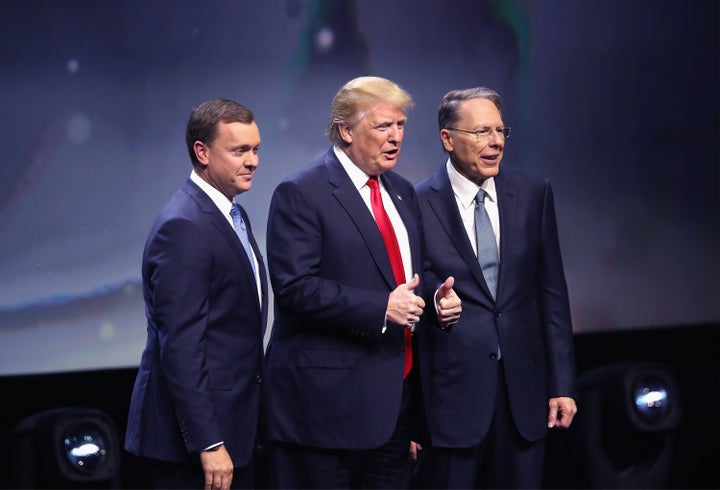
Until around 9 p.m. on November 8, just about everyone in the gun violence prevention (GVP) community, myself included, thought that we would have a great ally moving into the White House on January 20, 2017. Then some disturbing and unanticipated results came out of Pennsylvania, and in short order Gun-sense Nation went from dreaming about the possibility of reducing gun violence during a Hillary Clinton presidency to figuring out how to keep the issue of gun violence prevention alive during the Age of Trump.
Let’s begin counting the numbers which don’t look so good. The Senate is still held by the GOP, even if a pro-gun weasel named Kelly Ayotte got tossed out the door. And in the House the GOP dropped a net of 6 seats, but a 241-194 majority is still a good score. At the state level there has never been a time when so many Governors or legislative chambers were colored red. In other words, the current political alignment doesn’t bode well for sensible gun reforms.
And here is the basic dilemma facing GVP, namely, that the agenda for reducing gun violence, as sensible and modest as it is, calls for some kind of government intervention for just about every GVP effort likely to emerge. Expanding background checks to secondary transfers requires a change in the law which established NICS. Banning high-capacity magazines and placing limits on the sale of assault rifles also requires action at the federal legislative level, although such initiatives have been implemented in a handful of states.
On the other hand, as the number of gun laws in any locality goes up, the amount of gun violence of all kinds goes down. And let’s remember that the next election is now less than two years away. Furthermore, GVP did pretty well last month in state-level ballot initiatives, winning three out of four. So the fact that national legislation might not go forward doesn’t mean there aren’t other ways to skin the proverbial cat. I live in Massachusetts which was the first state to legalize gay marriage in 2004. Eleven years later the SCOTUS declared gay marriage to be law of the land. If that’s what it takes, that’s what it takes.
But no matter which strategy is employed to move the issue of gun violence forward, Gun-sense Nation is still going to have to figure out messaging which can be an effective response to the increasingly strident and extreme rhetoric being produced by the other side, in particular the idea that we all have some kind of God-given ‘right’ to protect ourselves and our communities with personally-owned guns.
The notion of lawful self-protection comes right out of British Common Law and is embodied in the ‘Life, Liberty and Pursuit of Happiness’ clause of the Declaration of Independence. But nowhere can you find any statute that gives citizens the freedom to make an unhindered decision about how they are going to exercise this ‘right’ to self-defense which, incidentally, isn’t mentioned in the vaunted Second Amendment at all.
But here’s the problem. A majority of Americans, certainly more than a majority of the up-and-coming millennials, simply don’t trust government and increasingly Americans are being drawn to considering alternatives to the government when it comes to deciding and regulating civic affairs. You can see this in a recent Harvard poll, in numerous surveys conducted by Pew, and if there was one message that galvanized support for Trump it was the message that government is ‘no good.’
The idea that individuals rather than government should be responsible for protecting themselves has been basic NRA doctrine since the organization made a right turn in the late 1970s to support the gun industry’s industry shift to the sale of self-defense guns. So if Gun-sense Nation is going to promote ‘sensible’ gun regulations that require government interventions, the wider issue of the role and value of government will have to be addressed. Unless, of course, we take on the much more difficult problem of creating a culture without guns. Unless...
